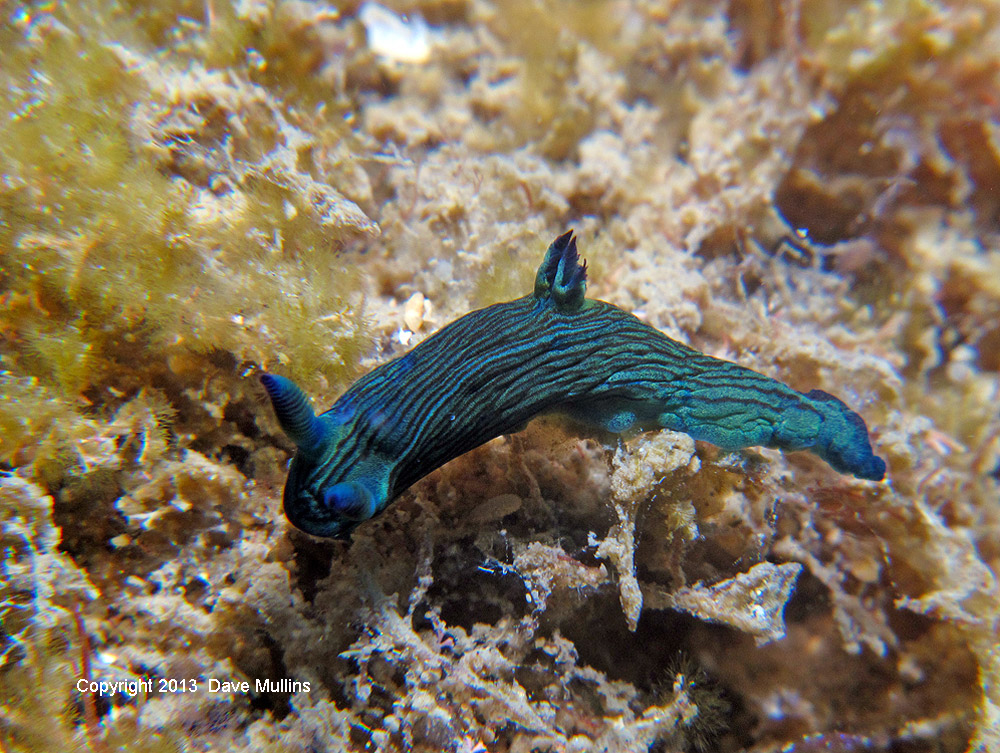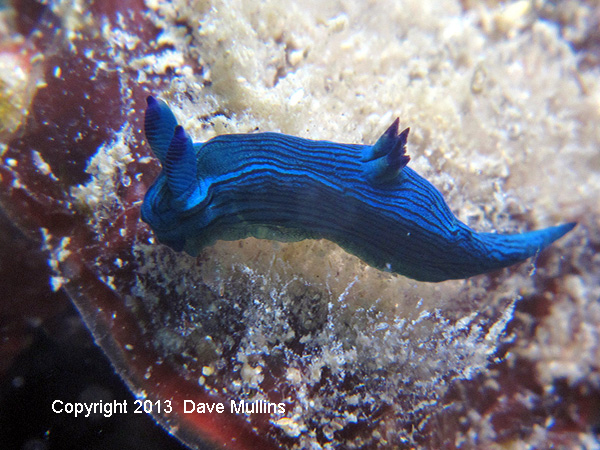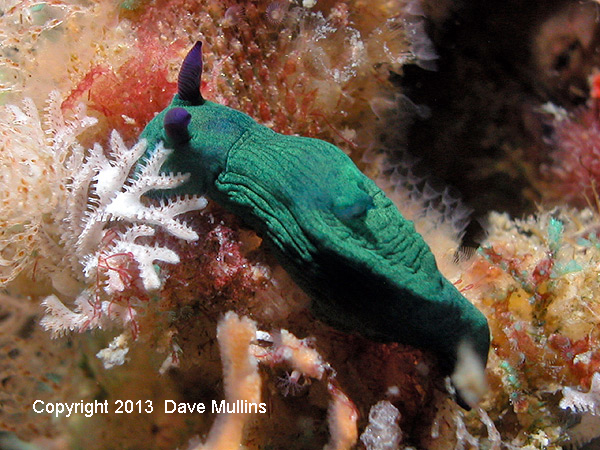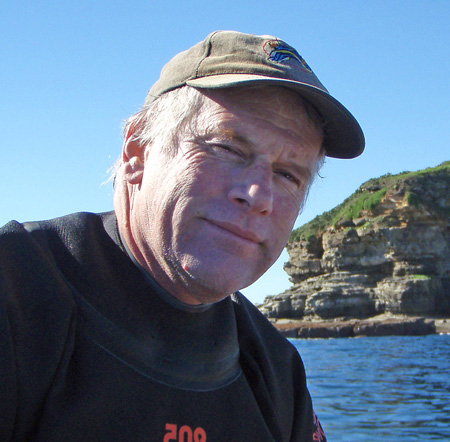 |
Tambja tenuilineata
Image courtesy of David MullinsOld Woman Island, S.E. Queensland, Australia.
Nikon Coolpix 5000 in Subal Housing, twin Inon Z220 strobes
 |
Tambja tenuilineata Miller & Haagh, 2005
This is a small species of polycerid nudibranch with a limited temperate distribution growing to a length of 40 mm but typically much smaller. The distinguishing features are the green body bearing longitudinal integumentary ridges with many longitudinal narrow black lines that traverse its entire length together with the green rhinophores and green gills all with bluish/purple apices. Occasionally the rhinophore stalk is similarly coloured. The notum is not delineated from the side of the body with a brim however the head has a distinct ridge extending anteriorly around its edge from rhinophore to rhinophore. The 5 or 6 gills are simple, sparsely branched and non-retractile being carried in a cluster high mid-length on the dorsum. |
 |
Very occasionally it is found without any of the black lines a situation that allows the integumentary ridges to be more apparent. Also known to be yellow in colour instead of green it being suggested that these individuals change colour to green as they mature into adults. We have noticed lately, in our survey area of south east Queensland, that some specimens look more blue than green and comment that these were found in the same population as the standard green versions. Tambja amakusana is sometimes misidentified as a form of Tambja tenuilineata without the black lines especially the green and yellow variants but it only has three gills that although purple tipped have white bases. Tambja tenuilineata feeds upon arborescent bryozoans including Bugula dentate. The spawn is laid as a white spiral coil. Distribution is limited to the eastern Australian coast of southern Queensland and New South Wales, Lord Howe Island and northern New Zealand. We have observed it being preyed upon by a fellow polycerid, the voracious Roboastra luteolineata that engulfs it whole. References:
Rudman 1998 - 2010. Tambja tenuilineata, Factsheet & Related Messages, Sea Slug Forum, Australian Museum, Sydney. |
Queensland, Australia
marineimages@hotmail.com
September 2013
David Mullins
 |
Dave Mullins has been taking underwater photos since 1970 and seen and embraced a host of changes and developments in diving and underwater photographic equipment and practices since then. He dived the Great Barrier Reef, Australia for many many years however for the past ten years he has focused his efforts almost entirely upon the Sunshine Coast, Queensland, Australia documenting the sea slugs of the region. To adequately survey the area he operates both a 5 metre RIB on the Sunshine Coast and a 10 metre powercat out of Scarborough on Moreton Bay. Together with Gary Cobb he has found 550 species of sea slug in this area alone that have been recorded and posted on their website:
nudibranch.com.au He has retired from his engineering business and recently taken on the CRITTER ID column in SportDiving Magazine (formerly by the late & great Neville Coleman) with the assistance of several world-renowned experts. Visit his website: www.marineimages.info and use the CRITTER ID Portal there to have your critters identified or confirmed and published in the magazine. |
